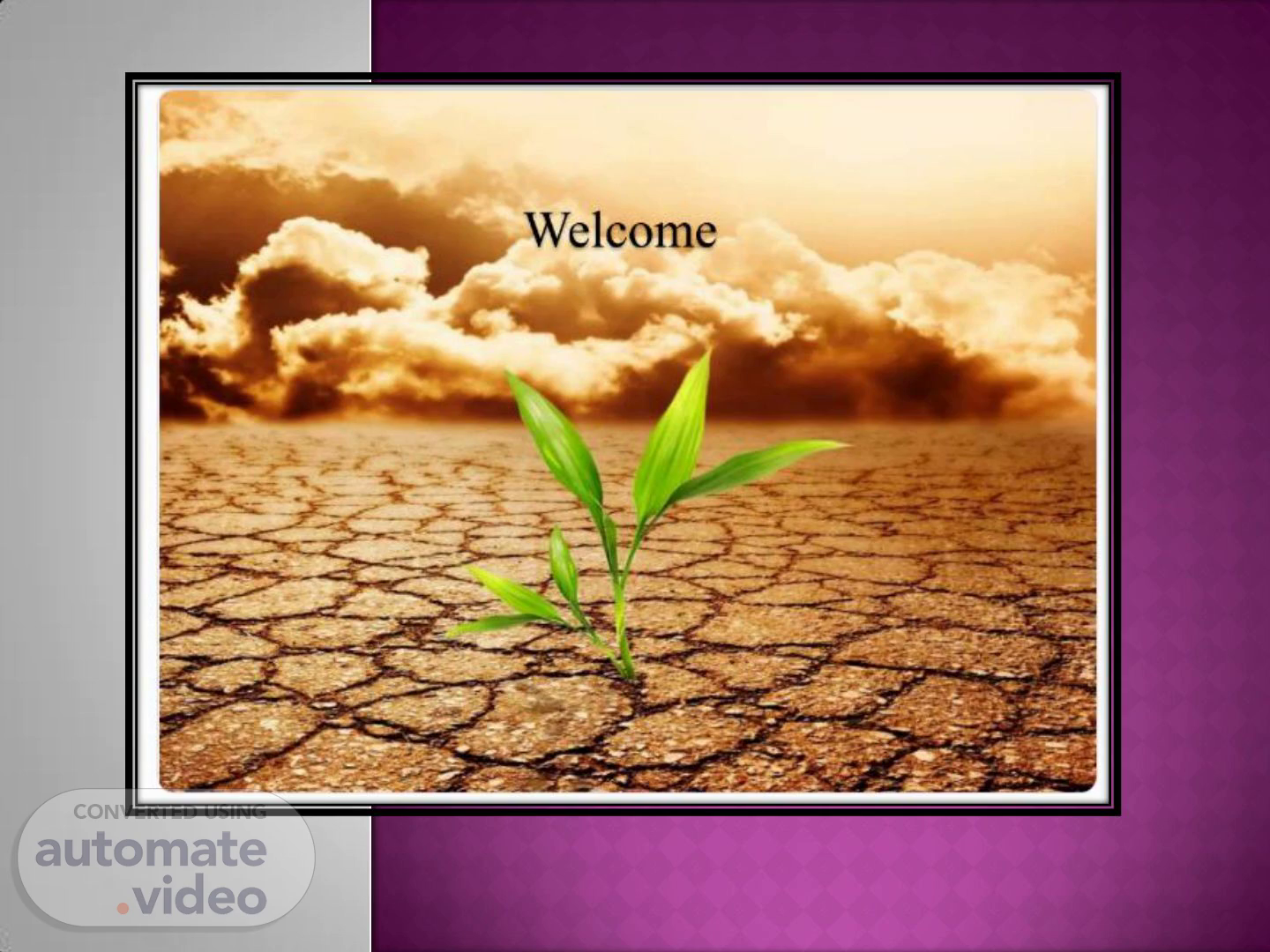Scene 1 (0s)
otu001öA\.
Scene 2 (5s)
IMPACT AND EFFECT OF CLIMATE CHANGE ON AGRICULTURE.
Scene 3 (12s)
What is climate ??? Climate is the long-term pattern of weather in a particular area • It is measured by assessing the patterns of variation in temperature, humidity, pressure, wind, precipitation and other meteorological variables in a given region over long periods of time Climate is dilTerent from weather. weather only describes the short-term conditions of these variables in a given region.
Scene 4 (29s)
CLIMATE CHANGE IN DEVELOPING COUNTRIES • Poor and developing countries are mostly affected by climate change In developing countries like India, climate change is an additional burden because ecological and socioeconomic systems are already facing pressures from rapid population industrialization and economic development Developing countries will be particularly badly hit for the reasons: -Stronger dependence on agriculture — Resource scarcity: Fewer resources associated with greater vulnerability.
Scene 5 (45s)
CLIMATECHANCE IN INDIA *too. EXPECTED IMPACTS FOOD INSECURITY 63 rnillion EXTREME WEATHER EVENTS FLOODS MORE SEVERE AND HEIGHTENED DROUGHT CONDITIONS BY 2030 COSTS 1 TO RISE BY EXTREME HEAT 48-60C and kit led people SEA LEVEL RISE MILLION RESIDENTS AND TRILLION IN ASSETS ENERGY OENANO REDUCED PUBLIC HEALTH DENOUE M A LARIA CHOLERA BIC L ION 'N SECTOR 'N ao.o. SEVERELY AFFECT INCOME OF OF THE Source : www.climateeye.com, 2014 ECONOMtc COST OF CHANOC CS CONTINUE DOWN PAT" OF DEVE 'NO IA COULD LOSE f. OF oop BY AND BY 2 •oo 10.
Scene 6 (1m 3s)
Factors responsible for Climate change Climate change Greenhouse Gases restation Land use change Energy usage vehicular usage 12.
Scene 7 (1m 11s)
Greenhouse Gases (GHGs) are gases in the atmosphere that absorb and emit radiation within the thermal infrared range. Greenhouse gas emissions from agriculture have increased by approximately 17 per cent since 1990. C02 is the most important anthropogenic GIIG as it constitutes about 70 per cent of the total emissions. The per-capita emission of an Indian citizen is 1.2 tonnes of Carbon dioxide where as in US with 20.6 tonnes. The green house gases have a drastic efTect on temperature , human health , biodiversity loss etc..
Scene 8 (1m 34s)
GREEN HOUSE GAS EMISSION 27% 3% 5% 7% (2013) 25% 15% CHINA AMERICA • EUROPE INDIA RUSSIA . JAPAN • BRAZIL INDONESIA MEXICO • IRAN • OTHERS 14.
Scene 9 (1m 42s)
DEFORESTATION National Action Plan on Climate Change (NAPCC) estimates that 68% of the forest areas in India are likely to experience shift in forest types by the end of the 21st century, which needs our immediate attention SHARE OF DIFFERENT COUNTRIES • Brazil • Indonesia Paraguay • Malaysia India DR congo others SOURCE: FAO 201.
Scene 10 (1m 54s)
Impact of climate change on different sectors Health rtorta/ity InfectK>us dseases Ajr-quabty Temperature Precipitation Sca IMPACTS ON... Rise Species and Natural Areas LOSS ot h±aat and speees Cryosphere Water Resources Water Water *..aitry Compet'b00 toe water Agri cutture Crop denznds Forests Forest compo•oon range Forest health Coastal Areas Eros•on Of of coastal lands Additional costs prt*ect coastN commuvOes 20.
Scene 11 (2m 7s)
Impact of climate change on agriculture.
Scene 12 (2m 14s)
• Rise in temperatures likely to affect crops differently from region to region • India is a predominantly agriculture-oriented economy, as around 50 per cent of the population directly depends on agriculture either as farmers or agricultural laborers • Food production in India is sensitive to climate change like variations in temperature and monsoon It is predicted that a loss of 10 to 40 per cent in production may occur by 2100 in India due to climate change (NAPCC).
Scene 13 (2m 33s)
Mitigation of climate change • Improving organic matter management Methane emission from ruminants can be reduced by altering the feed composition Efficient management practice to reduce N20 emission is site-specific nutrient management. Mitigating methane emission from rice cultivation. Application of plant-derived organics such as neem oil and neem cake which can also act as nitrification inhibitors.
Scene 14 (2m 49s)
How to cut down emissions? The British Petroleum suggests different options to cut down the emission of C02 by 110 million tonnes. Replace coal Increase renewables Increase nuclear Improve vehicle with gas in power (% of total power) power generation power generation energy efficiency hange -equired:.
